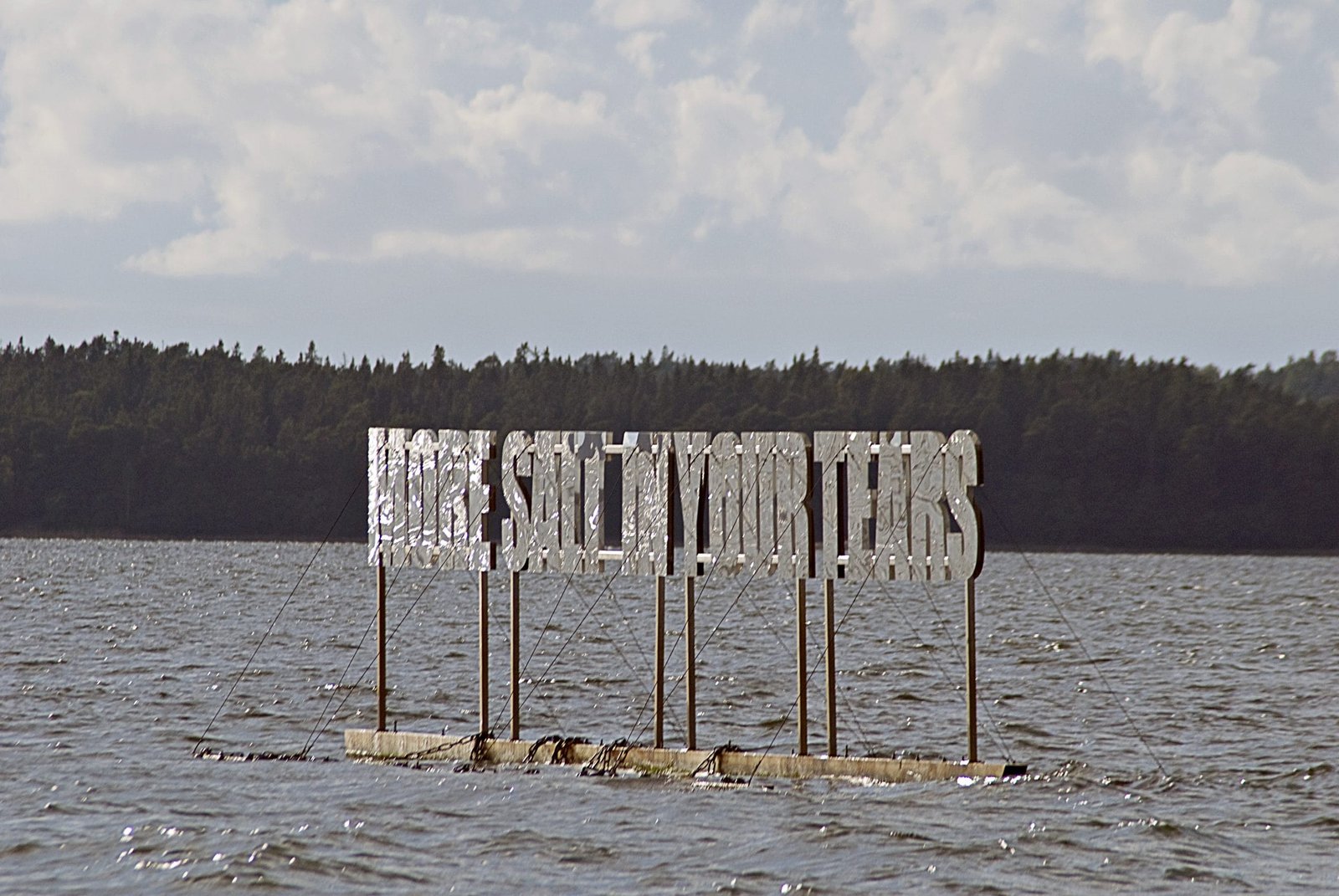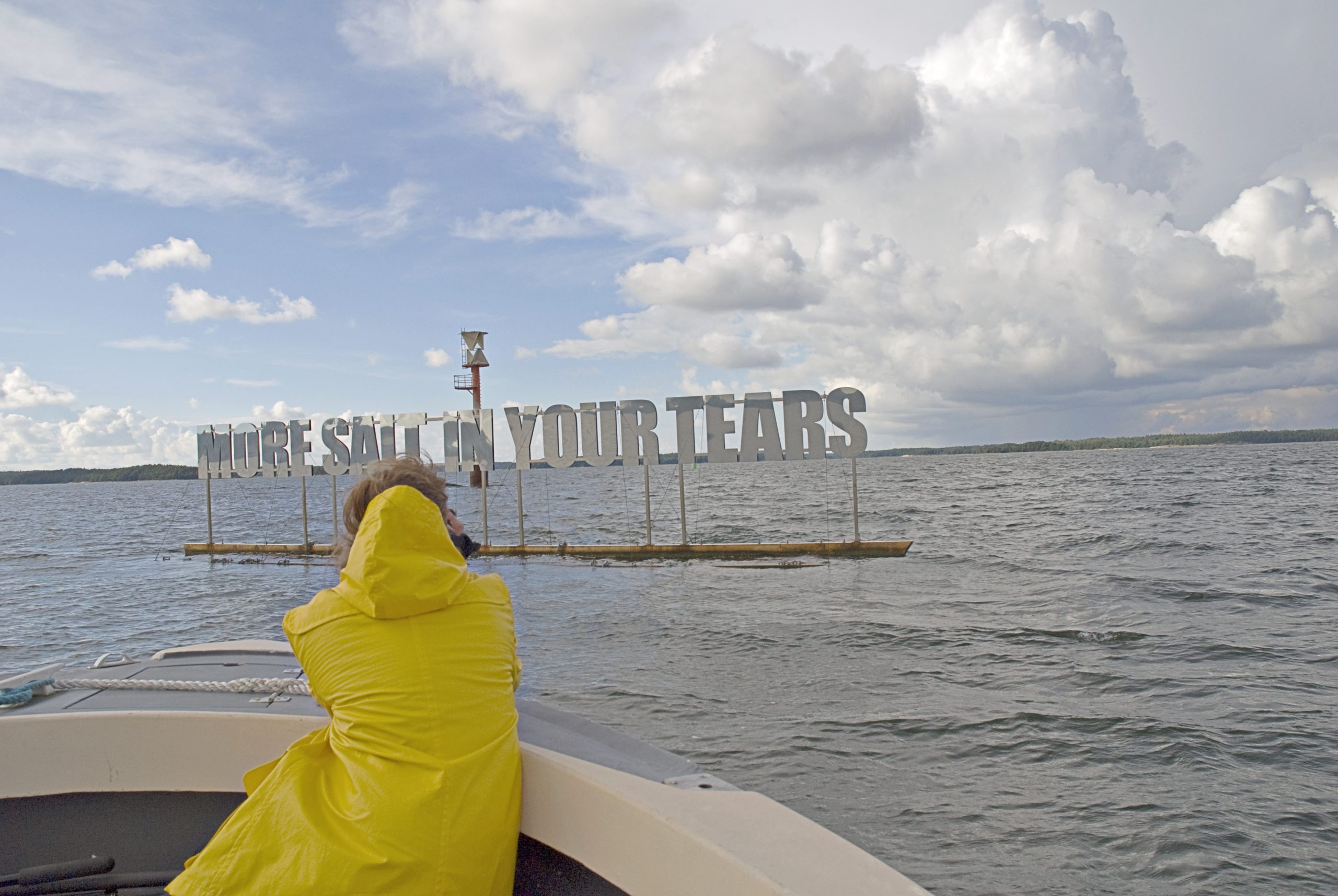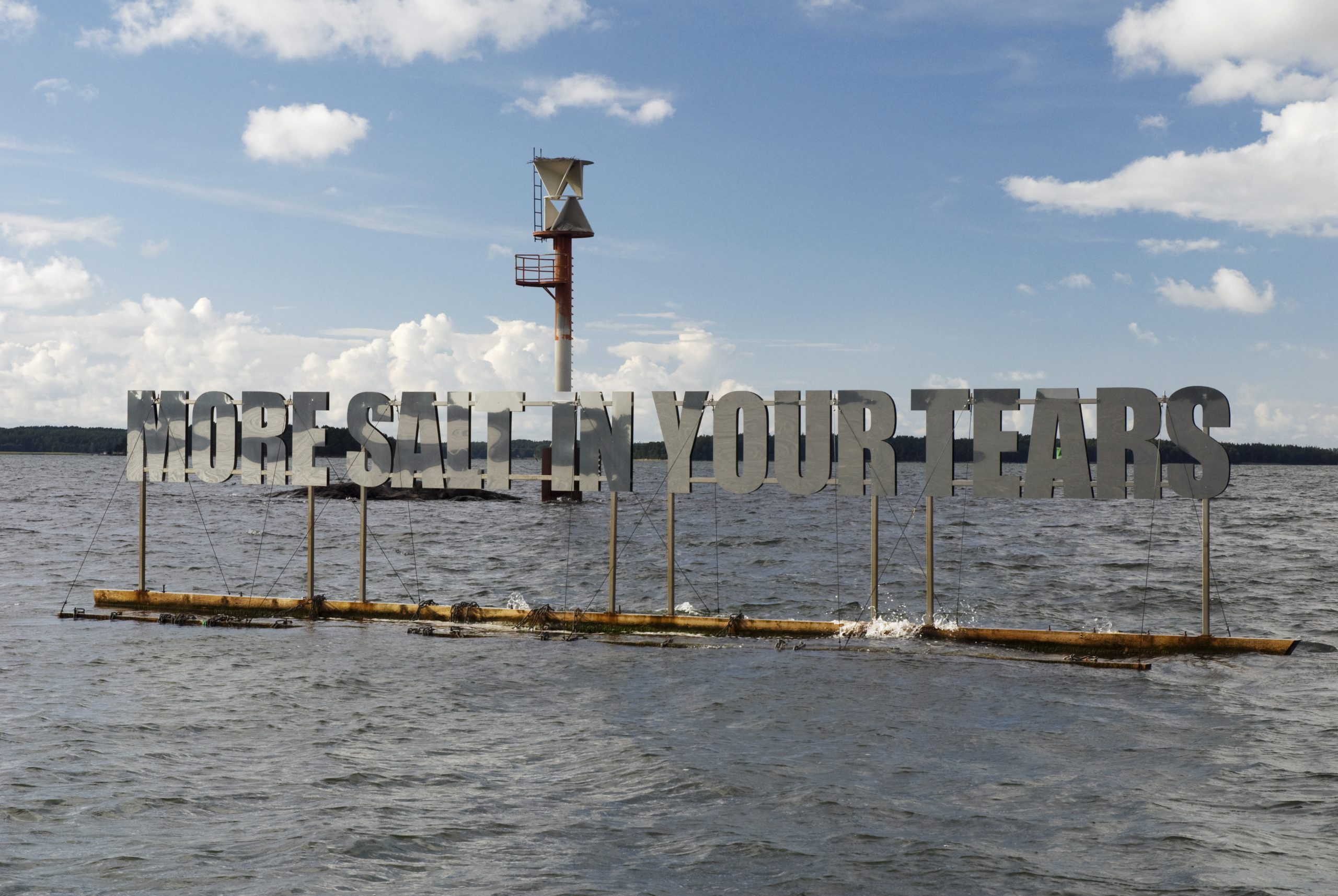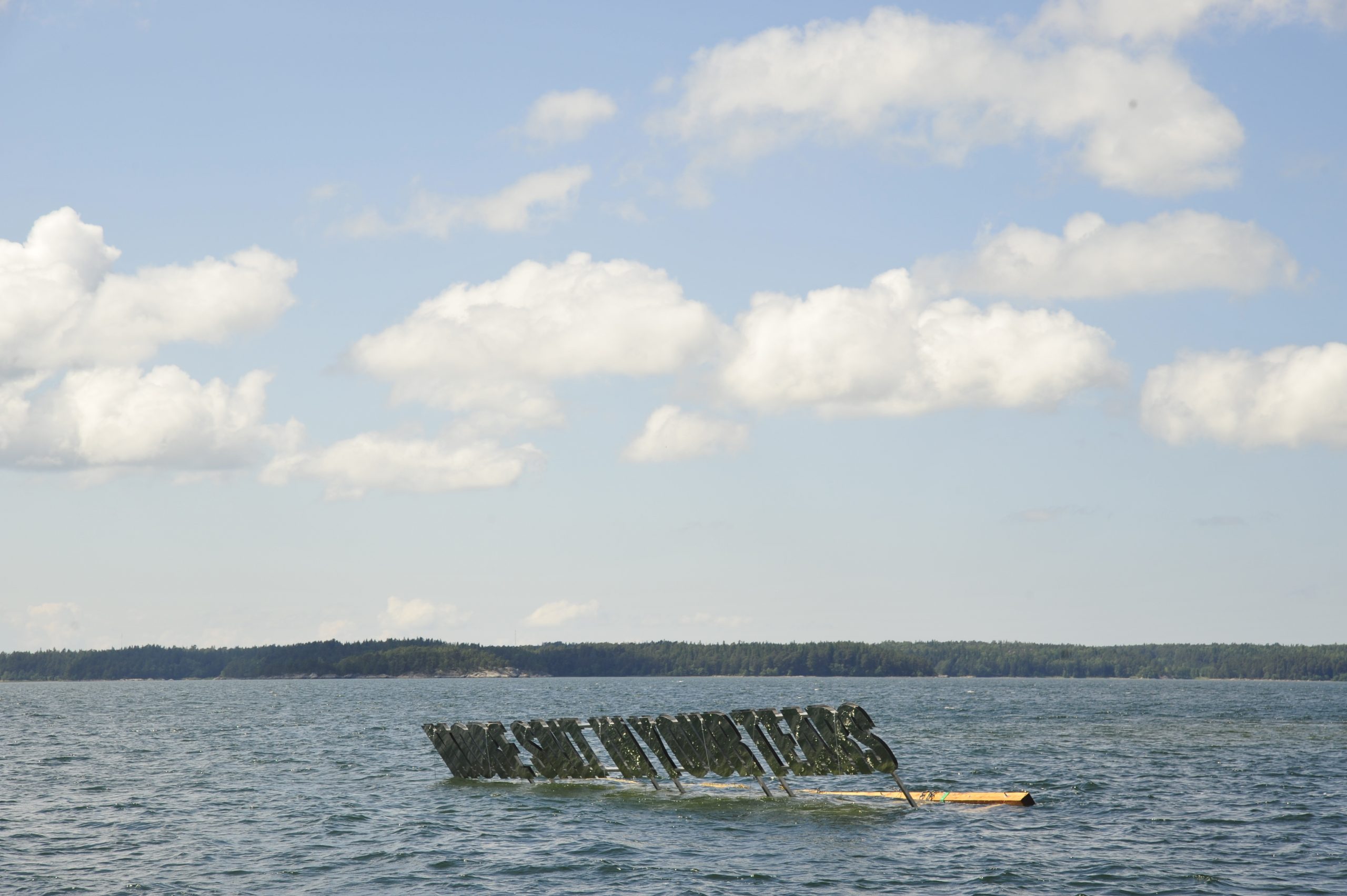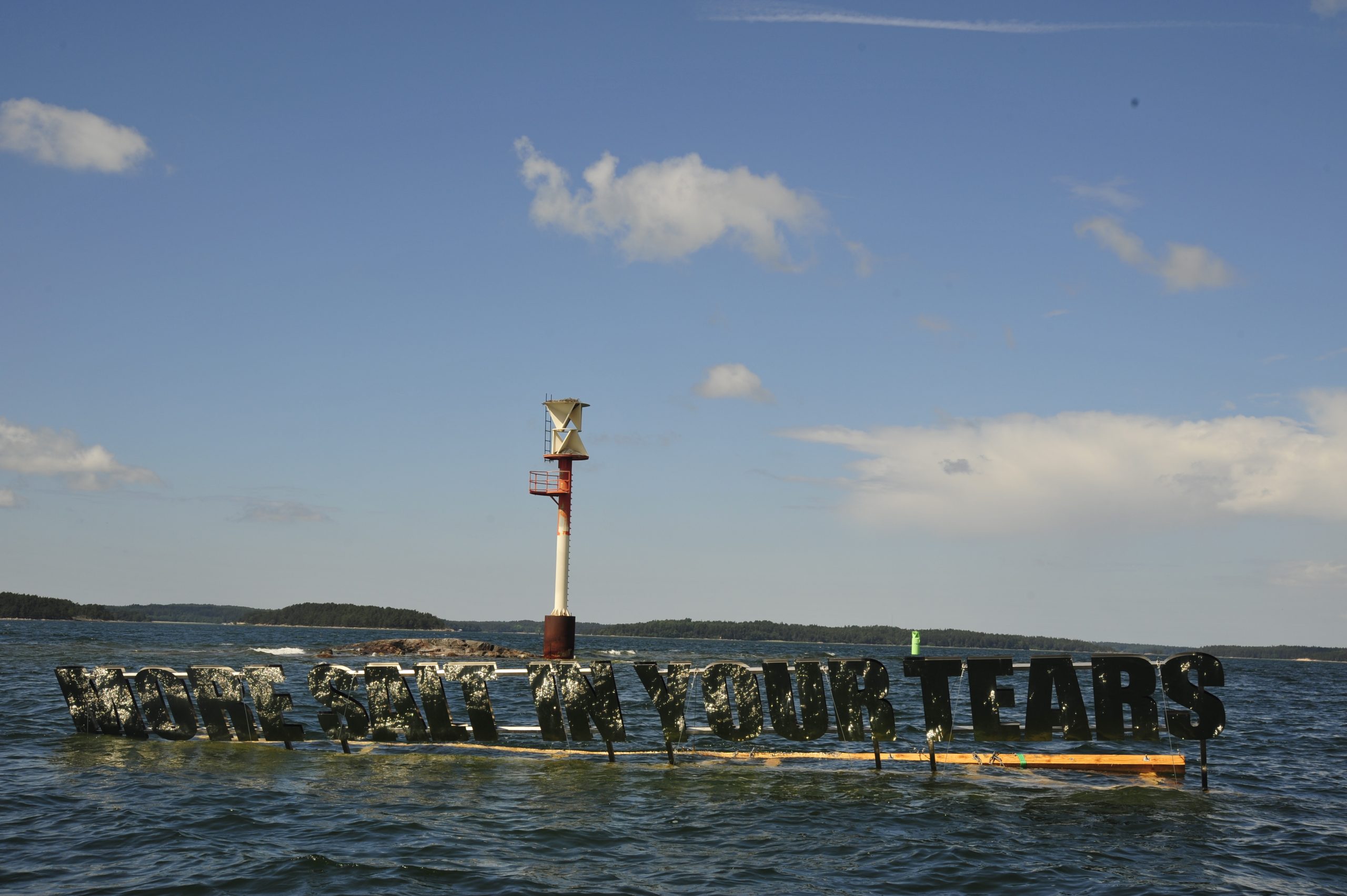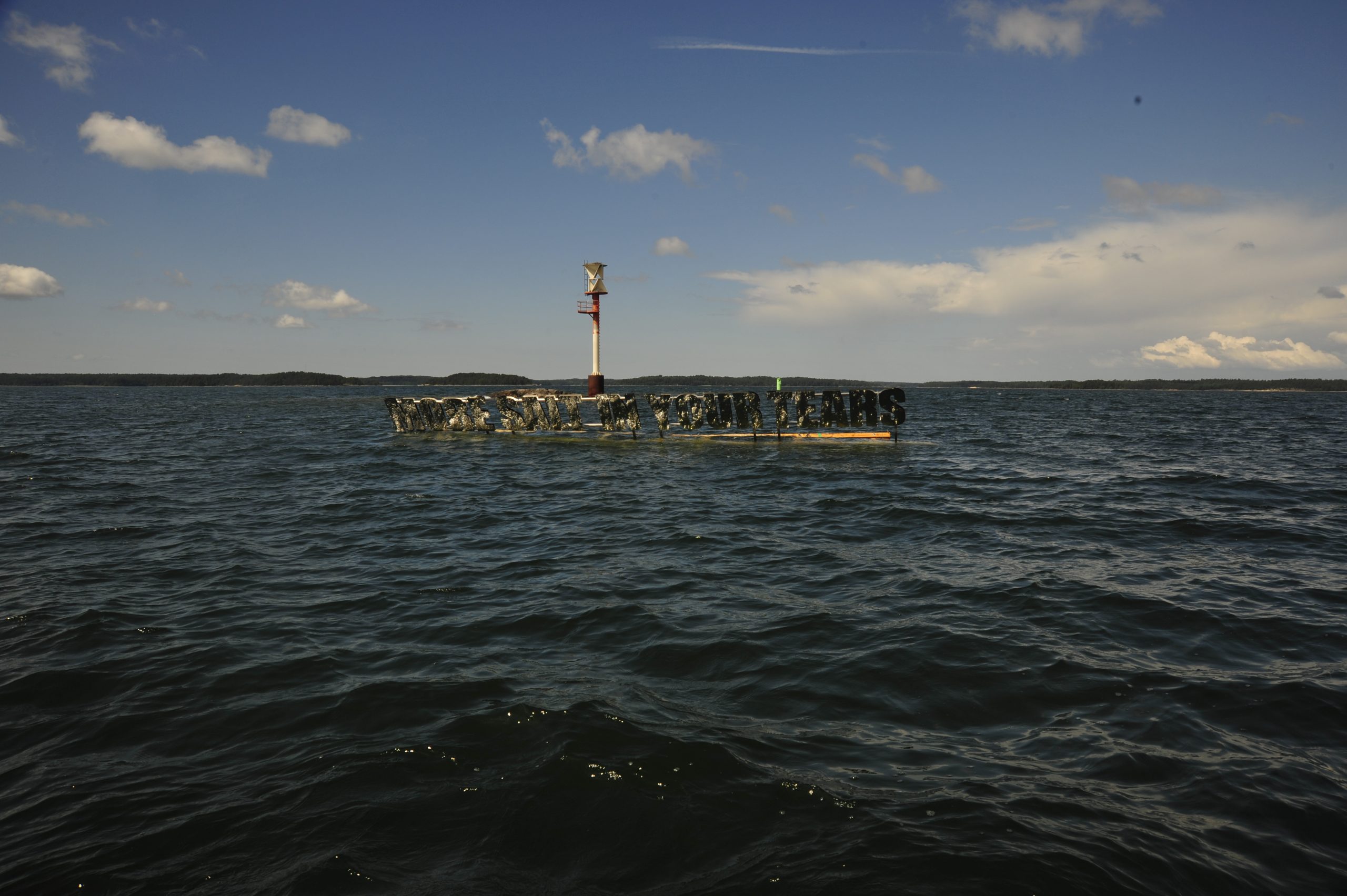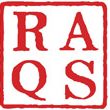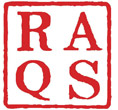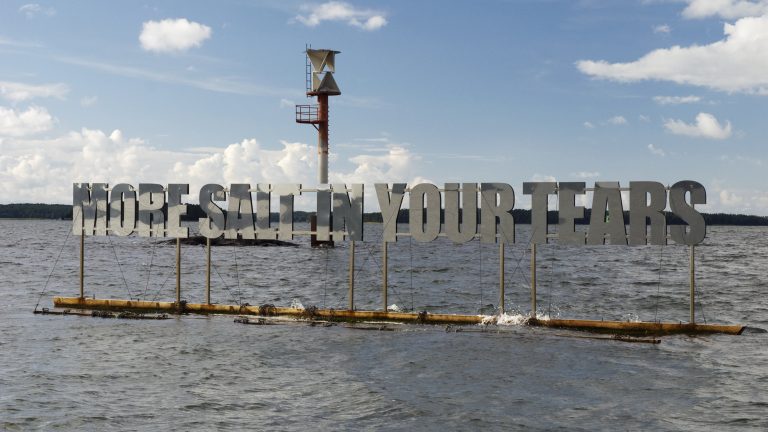More Salt In Your Tears
Site-specific installation in the Baltic Sea with stainless steel, steel cable, wood, concrete anchors
Contemporary Art Archipelago, Turku, Finland (2011)
More Salt In Your Tears is a text sculpture composed of three dimensional stainless steel letter-forms anchored on to a shallow section of seabed of the Baltic Sea near Turku, Finland. The letters combine to form a single phrase – More Salt In Your Tears – that can be visible from the decks of passing ferry-boats, ships and low-flying aircraft. With this work we fulfill three specific desires, of writing on water, of connecting body fluids like tears in a precise and intimate way to large natural water bodies and of drawing attention to the ways in which we all respond at a subliminal level to the presence of water. This work continues a pre-occupation with the emotional resonances of marine and coastal landscapes that began with Unusually Adrift From the Coastline (2008), which used the memory of abandoned light-houses to tap into the ineffable quality of our encounters with light, horizons and coastlines by the North Sea.
With More Salt In Your Tears we move into another register, of reading the sea, of weighing tears and tasting the feeling what it means to be close to the sea. Seen at a distance, the work will appear as a reflecting interruption on the water whose shapes also resolve into letters and words. The letter-forms are a set of polished surfaces, gleaming like mirrors as they stand one metre above the water and fifteen metros across the surface of the sea. The forms will mirror the horizon, the sea, reflecting the changing sunlight, and aspects of anything that sails or swims past.The clear surface will change colour as the sea, sky and sunlight themselves vary over the course of the day. In this way, the work will act as an index of the alive, changing surface of the sea, the seasons and time itself.
This is heightened by the startling realization that our tears have more salt than the Baltic Sea. Central to the work is the notion that the Baltic Sea, (which being a virtually inland, river fed water body) has less salinity in comparison to our tears. In recent years, climatologists and oceanographers have expressed the concern that global warming may increase the salinity of the Baltic Sea and by doing so cause irreversible damage to the unique ecosystem of this marine environment. In that sense, More Salt In Your Tears is a paradoxical statement of hope and optimism, for although tears are universally understood to stand in for sad tidings, the day there will be more salt in the Baltic Sea than in our tears will indeed be an occasion for mourning. The hope that there may always be more salt in our tears than in the Baltic Sea is a strong undercurrent of this work.
